1 e-preservationscience Pigment checkers. A pigment board was prepared using a cotton/polyester fine grain canvas 320 gr/m 2 with preparation and sized (ref 569 pieraccini.com) based on titanium white and acrylic resin. Two cross-hair lines of 0.4 mm thickness (horizontal and vertical) were drawn on the canvas before the application of paint, in order to enable evaluation of the pige-ps, 2016, 13, 1-6 ISSN: web edition ISSN: print edition e-preservation Science (e-ps) is published by Morana RTD d.o.o. INFRARED TECHNICAL PHOTOGRAPHY FOR ART EXAMINATION Copyright M O R A N A RTD d.o.o. Antonino Cosentino TECHNICAL PAPER 1. CHSOS - Cultural Heritage Science Open Source, Piazza Cantarella 11, Aci Sant Antonio, Italy corresponding author: Abstract This paper discusses technical photographic methods based on the extended infrared sensitivity of a digital camera modified with the removal of the in-built hot mirror filter on the CCD or CMOS sensor, which in turn renders it sensitive to in frared light with wavelength up to approximately 1100 nm. Four methods are presented: infrared (reflected light) (IR), infrared transmitted (IRT), infrared false color (IRFC) and infrared fluorescence (IRF). The procedures and the equipment are discussed using examples from case studies and prepared samples. 1 Introduction The transparency of pigments in the infrared range was noticed already in the 1930 s using infrared photographic films, but their sensitivity was only up to 900 nm, and most of the pigments could not be penetrated at very near IR wavelengths. R. J. van Asperen de Boer 1 discovered in the 1960 s that Vidicon cameras could take advantage of a much farther infrared range, until about 2200 nm, and they remained the best infrared detector for art examination until the development of InGaAs cameras 2 which are sensitive up to 1700 nm. CCD imaging sensors cover the range only up to about 1100 nm, but their affordability and significantly higher resolution has made them a n attractive alternative to infrared reflectography (IRR) 3 performed with either Vidicon or InGaAs cameras. Nowadays, the term infrared photography (IR) indicates the examination performed with digital cameras. This method has been explored from the beginning of the first decade of the 21st century, and IR imaging has been used in many cultural heritage related fields such as fine arts 4-5, wall paintings 6 and archaeology 7. The CMOS and CCD imaging sensors of the photographic digital cameras respond both to the near infrared and near ultraviolet ranges of the spectrum ( about nm) and camera manufacturers install an IR cut-off filter to reduce infrared transmission for general usage scenarios. The full spectrum modification consists of the removal of this filter and it is performed by specialized companies, widely spreading the access to this examination tool. This paper illustrates technical photographic methods for art examination that take advantage of the extended sensitivity of full spectrum modified digital camera into the infrared region. Specifically, this paper discusses infrared (reflected light) (IR), infrared transmitted (IRT), infrared fluorescence (IRF) and infrared false color (IRFC).The advantage of using a full spectrum digital camera is that the same camera can be used also for other techniques, such as ultraviolet photography 8,9 and multispectral imaging Experimental received: 09/02/2015 accepted: 17/12/2015 key words: infrared photography, infrared fluorescence, infrared transmitted, infrared false color 1
2 wavelengths. The IR images presented in this study were acquired with the Heliopan 1000 filter. Before proceeding with the technical aspects of each of the IR techniques, issues common to all of them and closely inherent to the acquisition and editing of images in the near infrared range ( nm) are discussed. Figure 1: 54 pigments have been tested on two opaque boards laid with gum arabic and egg tempera and on canvas with pigments laid using linseed oil. ment transparency in the IR. The lines were then fixed with an acrylic resin (Maimeri # 675). Eventually, the canvas was covered with a cardboard matte printed with the pigments names and codes. This pigment checker allowed the transmittance of 54 pigments to be verified with infrared photography. Two other pigment boards with the same pigments laid with gum arabic and egg tempera on a opaque cardboard support were also used for IRFC and IR imaging (Figure 1). Lighting. Infrared light can be provided by halogen lamps with emissi on that approximates a black body radiation and follows Plank s law 13. Commercial halogen bulbs provide enough infrared for most applications if heating is not an issue. For subjects particularly sensitive to heat, and for shooting in working environment that must be kept cool, LEDs and flash lights can be used. LEDs are available at different wavelengths in the infrared region (750, 850, and 940 nm). The 940 nm LEDs are preferred because they reach to the edge of the full spectrum camera sensitivity in the infrared region and allow the user to take advantage of the increased transparency of the pigments in this region. It must also be mentioned that white light LEDs have an infrared component, but this is much less intense than that provided by the IR LEDs. Flash lights have a sufficient IR infrared component and they are preferred when exposure must be rapid such as for the RTI technique 14,15 (Figure 2). The only issue with the flash lights is that the infrared light provided ma y not be sufficient for large objects and, in contrary to halogen lamps, with the flash lights the exposure may not achieve enough illumination. Consequently, the power of the strobe lights should match the dimension of the object. Other advantages of the strobe light are the possibility to use them for the VIS photography and to easily polarize them. Calibration. The infrared technical photography images presented in this paper were taken using a Nikon D800 DSLR (36 MP, CMOS sensor) digital camera modified to be full spectrum (about nm). It is recommended to tether the camera to a computer for sharper focusing using live-view mode. For the purpose of this work the American Institute of Conservation Photo Documentation (AIC PhD) target 16 was used to adjust the white balance for visible photography, which is necessary for editing the infrared false color images. The camera has been calibrated with the X-rite ColorChecker Passport and its bundled software since, due to differences in technologies and variables in manufacturing processes, every camera captures colors a bit differently. Registration. In the workflow for technical photographic documentation of art works, it is recommended to acquire all the images maintaining the same position for both the camera and the subject in order to shoot photos that overlap each other spatially. This procedure facilitates the comparison between images since they can be uploaded as layers of a single image file into a photo editing software. The images can then be studied by switching between the layers and making observations based on interpretations from of all of them. Unfortunately, the images acquired in the infrared region and the ultraviolet region do not overlap the corresponding visible images, because visible and infrared light feature different optical paths inside standard photographic lenses. Consequently, it is necessary to refocus the lens anytime a new infrared photo is taken after a visible one and then re gister the Figure 2: IR images can be acquired with studio flashes or halogen lamps. Filters. There are infrared cutoff filters for all the infrared ranges where a modified camera is sensitive. Among the most common filters used are the ones that allow the infrared over 780, 800, 850, 900 and 1000 nm to pass. The only filter recommended for studies of pigments is the 1000 nm filter, since pigments become more transparent at higher infrared Figure 3. The cross-hair stickers placed at the corners of the painting allow to easily rescale the IR image and register it over the VIS photo. 2
3 by M O R A N A RTD d.o.o. infrared images over the visible photo. Registration is the term used in imaging science to indicate the process of transforming an image in order to overlap a reference image of the same scene but taken with different sensor or other conditions. In the technical photography workflow the VIS image represents the reference and the other images must overlap it. Images such as ultraviolet photography (UVF) don t need any registration since the only parameter changed is the lighting. On the other hand, registration of the IR images is mandatory because the different focusing causes a change of the borders of the scene photographed. This procedure can be realized with a software tool for automatic registration or manually. The refocusing causes a change of the scene which can be corrected with simple rescaling. It is recommended to apply four cross-hair stickers at the corners of the paintings (Figure 3). The stickers can be used as references to rescale the IR image over the VIS. If no other misplacement of the camera and the subject has taken place, this procedure usually provides adequate registration. The cross-hairs must be drawn with an ink, which absorbs in IR, such as carbon based ink; otherwise they disappear in the infrared images. On the other hand, the refocusing issue could be solved using an expensive apochromatic lens that guarantees focusing across the UV, VIS and IR, such as the Coastal Optical 1:4 Apochromatic Macro 60 mm lens. Editing. The Nikon D800, like most digital color cameras, features a CMOS imaging detector whose photosensors do not distinguish the wavelength of the incoming light and are covered with a CFA (color filter array) composed of tiny color filters to select only red, green or blue light. The CFA color filters are largely transparent to IR, with the green filters absorbing more of the IR light than the other two, resulting in the purple color of the infrared photos. It is preferred to edit the infr ared images to B/W because it is easier and more effective to read grey tones and liken them to their traditional appearance in infrared films. Consequently, the editing of the infrared raw photos are desatureted in order to remove the color component. Hot spots. These are bright circles in the center of the infrared images which usually become more evident at high f-number. Hot spots can be caused by the coatings inside the lens barrel, the lens elements, and the interaction between the lens elements and the imaging sensor. An online database of lenses 17 tested for hot spots showed that all of the standard photographic lenses are affected at the highest f-number and only the Coastal Optical Apochromatic Macro 60 mm lens doesn t show hotspots at any f-number. There are other resources on the web providing qualitative information on lenses for infrared photography and hot spots Results and Discussion This paper illustrates 4 infrared photographic methods which can be realized using a full spectrum modified digital camera. Figure 4 illustrates the set-up of the equipment (camera, lighting and filters) and the subject for the infrared photographic methods discussed. 3.1 Infrared (IR) The camera and the lights stand in front of the subject, usually two lamps are used, one on each side, at less than 45 degrees to reduce reflection (Figure 4). In addition to the raw image desaturation done to render the image in B/W, the photo is also exposure corrected using the AIC Photo Documentation target photographed in the scene to have for the N8 grey patch RGB value 100 ± 5. Infrared photography is useful to detect underdrawing and overpainting thanks to the infrared transparency of most pigments 19. In an infrared image we are interested in the contrast between a bright and reflective ground layer and the drawing made with ink or paint which absorbs the infrared, such as a carbon based pigment (Figure 5). But if the drawing was realized with an infrared transparent paint there is no contrast with the ground layer and the drawing cannot be detected. Infrared photography can be coupled with other techniques creating a synergy which works to increase their capabilities, such as RTI (Reflectance Transformation Imaging) and panoramic photography 20,21. The VIS and IR images can be blended 22,23 to better read the underdrawing in relation to the actual painted figures and to compare a painting with the underpaints, highlighting changes between the original composition and the final version (Figure 6). Figure 4: Equipment set up for each infrared photographic method. 3
4 Figure 5: Infrared photography reveals underdrawing thanks to the contrast between the infrared light reflected by the ground and that absorbed by the drawing. IRT often provides a better reading of the underdrawing and underpainting. In particular it is effective for highly reflective pigments, such as lead white and titanium white. These very important white pigments in art, are the most used, respectively, before and after about Their hiding power is barely affected by infrared light, and since they strongly reflect light they don t produce a contrast with the ground and the underdrawing. On the other hand, if the infrared radiation comes from the back, the underdrawing becomes apparent (Figure 8, 9). 3.3 Infrared False color ( IRFC) Figure 6: Sicilian cart piece (Masciddara), 1920 s. The infrared photo reveals the sketched frame drawn to transfer the composition. The Luminosity blending mode of VIS and IR images allows us to read the drawing in the context of the actual pain ting colors. Courtesy of Master Domenico di Mauro, Aci Sant Antonio (Sicily). The Infrared False Color image is created by digitally editing the VIS and IR images of the same subject. Figure 10 shows the editing of the VIS and IR images of a wall painting in Assoro (Sicily) 25 into the IRFC image. The resulting blue IRFC color of the green drapery suggests malachite (Figure 11). IRFC is helpful to detect retouches and for the tentative identification of pigments. While IRFC does not provide conclusive results; it is recognized as a valid tool to select areas of interest for further analytical studies. A standard method to edit the IRFC images has been proposed 19, where the AIC PhD target serves to calibrate the exposure of both the VIS and IR images before they are mixed. The grey patches are identified by the following designations 3.2 Infrared Transmitted (IRT) Figure 7: IRT from the front (IRT) is generally preferred since the image of the underdrawing is resolved better than th rough the canvas (IRT canvas). This method 24 can be applied to paintings on canvas or other translucent supports, such as paper and parchment. In the case that the lighting can be effectively shielded, and no infrared light is diffused in the examination room, then the camera faces the painting s front. It is preferred to face the front of the painting if possible because the drawing lines will appear sharper since the infrared light will not be diffused by the canvas (Figure 7). Figure 10. To create the IRFC image the VIS green (G) and red (R) channels become respectively the IRFC blue (B) and green (G) channels. The IRFC red (R) channel is represented by the IR image. Detail, wall paintings. Church of Santa Maria degli Angeli, Assoro (Sicily). Figure 8: IRT allows us to detect the underdrawing below otherwise opaque white pigments. Figure 9: Underdrawing becomes more visible in IRT. Examples of blue (azurite), yellow (orpiment), green (green earth) and red (vermilion) pigments. F igure 11: Pigments of the same color feature a different IRFC color if they behave differently in the infrared. Malachite absorbs infrared, red, and blue light. Consequently, only its green component participates in the IRFC image, providing a final blue IRFC color for malachite. On the other hand, viridian additionally reflects the infrared and consequently its IRFC is the additive result of the red and blue channels, making it appear purple. 4
5 by M O R A N A RTD d.o.o. (white to black): white; N8; N6.5; N5; N3.5; and black. The images are then exposure corrected using the N8 neutral grey patch (150 +/- 5 for VIS and 100 +/- 5 for IR). False color images can be also acquired with specialized filters, such as the XNite BP1 (the images are indicated with the acronym BP1). This filter transmits visible light in the range nm and infrared after 800 nm and it can be used as an alternative to the IRFC method but with significant limitations. Digital color cameras feature CCD or CMOS imaging detectors whose photosensors cannot distinguish the wavelength of the incoming light and are covered with a CFA (color filter array) to select only red, green or blue light. The CFA is transparent to the infrared transmitted by the XNite BP1 and the photosensors can detect it. The photo that is obtained with XNite BP1 would have the infrared light contributing more to the red channel, since the far red has been cut out by the filter itself and therefore the infrared light is the only one that can contribute to the red channel. This filter provides images that are analogous to the IRFC because the infrared and visible lights are blended together and thus the BP1 is capable to distinguish between paints which feature different infrared reflectance. Compared to typical IRFC, BP1 is less effective since the infrared is also detected by the blue and green photosensors reducing the capacity to render pigments with different false colors (Figure 12). The advantage of BP1 over IRFC is that no editing is needed. Therefore, this method is much faster and it is particularly useful for the study of large artworks, such as mural paintings, since their documentation with IRFC Figure 12: Madonna and four Angels. IRFC highlights the retouches better than BP1. would require the laborious editing of numerous VIS and IR images. Another issue with the BP1 filter is that the images obtained are always a bit blurred, the actual amount dep ending on overall exposure parameters (aperture and distance). A standard lens can focus only one spectral range at a time, visible or infrared. Therefore, if focusing is fine in the visible range, the infrared would be out of focus. This issue can be solved using an apochromatic lens, but for the examination of objects at longer distances and with sufficient illumination, the use of a small f-number can minimize the defocusing. The BP1 filter has been tested on a collection of 54 historical pigments laid with egg tempera (Figure 13). The method distinguishes pigments with a different infrared response, such as malachite and verdigris (both absorb infrared), from the other greens (which reflect the infrared) (Figure 14). 3.4 Infrared Fluorescence (IRF) Some molecules and minerals 26 (among them mineral pigments) exhibit Infrared Fluorescence. This phenomenon is analogous to ultraviolet fluorescence where a beam of ultraviolet light induces emission of visible light. In the case of I nfrared Fluorescence, a beam of visible light generates an infrared emission (Figure 15). Vis i ble LED lamps have a weak infrared com po nent (between about nm) that contributes noise to the infrared flu o res cence pho to. However, the infrared component can be filtered out by applying the X-Nite CC1 fil ter on the LED lamp (Cree LED 3000K 550 LUMEN). Among his tor i cal pigments Egypt ian blue, cad mium red, cad mium yel low and cadmium green exhibit infrared flu o res cence. The first pub li ca tion on the appli ca tion of IRF to art, specifi cally to iden tify cadmium-based pig ments, goes back to the Infrared flu o res cence pho tog ra phy is used in archae ol ogy to detect even tiny frag ments of the pig ment Egypt ian blue 28. The infrared filter on the camera is the same Heliopan 1000 because the IRF emission of cadmium pigments and Egyptian blue occurs at long infrared wavelengths 29,30, and it is preferred to keep the same filter for all the infrared methods in order to a void any problems with alignment. The 800 nm IR filter, such as the B+W 093 filter, represents an alternative. Its transmittance does not exceed Figure 13: Pigments checker collection of 54 historical pigments laid with egg tempera. Figure 14: Swatches of malachite, verdigris, phthalo green and viridian. Both IRFC and BP1 can differentiate the two historical green pigments (malachite and verdigris) from the modern phthalo green and viridian. Figure 15: Ultraviolet and Infrared Fluorescence can both be described as a phenomenon where a specific light is input and another longer wavelength light is output. 5
6 1% until 800 nm, but increases to 88 % at 900 nm. This filter would be recommended for large subjects because it also allows the near infrared fluorescence emission to be collected, and therefore it will shorten the otherwise long exposures occurring with the Heliopan 1000 filter. However, it is important to note that in this case the residual infrared component from the LED lamp will become important and will pollute the image unless it is filtered out with the XNite CC1. In order to correct the exposure for IRF photography it is recommended to add a swatch of cadmium red to the AIC photo Documentation target. The red cadmium swatch should have an RGB 30 ± 5. The AIC target also allows us to verify that no infrared light is polluting the scene, since all of its swatches should be dark, except the cadmium red one. 4 Conclusions Four photographic methods for art examination based on the infrared sensitivity of a full spectrum modified digital camera were illustrated. This paper showed the equipment and the procedures to perform infrared (IR), infrared transmitted (IRT), infrared false color (IRFC) and infrared fluorescence (IRF) photography by using case studies and prepared samples. The study aimed to illustrate the simplest solutions and approaches to implement these methods in the art examination and documentation workflow used by museum photographers and conservators. 5 Acknowledgments The author wants to thank the Hercules Laboratory (Portugal) for allowing the test of the XNite BP1 filter. Special thanks to Aci Sant Antonio s last Sicilian cart painter: the 101 years old Master Domenico Di Mauro for letting us examine his collection. 6 References 1. J.R.J. van Asperen de Boer, Reflectography of Paintings Using an Infrared Vidicon Television System, Studies in Conservation, 1969, 14, M. Gargano, N. Ludwig, G. Poldi, A new methodology for comparing IR reflectographic systems, Infrared Physics & Technology, 2007, 49, A. Cosentino, Panoramic infrared Reflectography. Technical Recommendations, Intl Journal of Conservation Science, 2014, 5, S. Youn, Y. Kim, J. Lee, D. Har, A study of infrared reflectography for underdrawing detection using a digital camera, in: M.Roccetti, Ed., Proceeding of the IASTED International Conference Internet and Multimedia Systems and Applicatins, ACTA Press Anaheim, CA, USA, 2008, C. M. Falco, High resolution digital camera for infrared reflectography, Review of Scientific Instruments, 2009, A. Cosentino, M. Gil, M. Ribeiro, R. Di Mauro, Technical Photography for mural paintings: the newly discovered frescoes in Aci Sant Antonio (Sicily, Italy), Conservar Património, 2014, 20, G. Verhoeven, Imaging the invisible using modified digital still cameras for straightforward and low-cost archaeological near-infrared photography, Journal of Archaeological Science, 2008, 35, A. Cosentino, Practical notes on ultraviolet technical photography for art examination, Conservar Património, 2015, 21, A. Cosentino, E ffects of Different Binders on Technical Photography and Infrared Reflectography of 54 Historical Pigments, International Journal of Conservation Science, 2015, 6, A. Cosentino, Multispectral Imaging of Pigments with a digital camera and 12 interferential filters, e-preservation Science, 2015, 12, A. Cosentino, Panoramic, Macro and Micro Multispectral Imaging: An Affordable System for Mapping Pigments on Artworks, Journal of Conservation and Museum Studies, 2015, 13, A. Cosentino, Multispectral imaging system using 12 interference filters for mapping pigments, Conservar Património, 2015, 21, R. A. Serway, J. W. Jewett, Physics for Scientists and Engineers with Modern Physics, Cengage Learning, 8th edition, A. Cosentino, Macro Photography for Reflectance Transformation Imaging: A Practical Guide to the Highlights Method, e-conservation Journal, 2013, 1, A. Cosentino, S. Stout, C. Scandurra, Innovative Imaging Techniques for Examination and Documentation of mural paintings and histor ical graffiti in the catacombs of San Giovanni, Syracuse, International Journal of Conservation Science, 2015, 6, AIC PhotoDocumentation Targets (AIC PhD Targets), conservation - us.org. accessed Dec Cultural Heritage Science Open Source, Infrared Photography Lenses Database accessed Dec Hannemyr s Digital Infrared Resource Page accessed Dec A. Cosentino, Identification of pigments by multispectral imaging; a flowchart method, Heritage Science, 2014, 2, DOI: / A. Cosentino, A practical guide to panoramic multispectral imaging, e-conservation Magazine, 2013, 25, A. Cosentino, M.C. Caggiani, G. Ruggiero, F. Salvemini, Panoramic Multispectral Imaging: Training and Case studies, Belgian Association of conservators Bulletin, 2014, 2 nd Trimester, D. Saunders, J. Cupitt, Elucidating Reflectograms by superimposing infra-red and colour images, National Gallery Technical Bulletin, 1995, 16, A. Cosentino, S. Stout, Photoshop and Multispectral Imaging for Art Documentation, e-preservation Scie nce, 2014, 11, A. Moutsatsou, D. Skapoula, M. Doulgeridis, The Contribution of Transmitted Infrared Imaging to Non-Invasive Study of Canvas Paintings at the National Gallery Alexandros Soutzos Museum, Greece, e-conservation magazine, 2011, 22, A. Cosentino, Fors, Fiber Optics Reflectance Spectroscopy con gli spettrometri miniaturizzati per l identificazione dei pigmenti, Archeomatica, 2014, 1, D. F. Barnes, Infrared Lumi nes cence of min er als, Geo log i cal Sur vey Bul letin 1052-C, United States Gov er ment Print ing office, Wash ing - ton, C. F. Bridg man, H. L. Gib son, Infrared Lumi nes cence in the Pho to - graphic Exam i na tion of Paint ings and Other Art Objects, Stud ies in Con ser va tion, 1963, 8, G. Accorsi, G. Verri, M. Bolog nesi, N. Armaroli, C. Clementi, C. Mil - iani, A. Romani, The excep tional near-infrared lumi nes cence prop erties of cupror i vaite (Egypt ian blue), Chem. Com mun., 2009, A. Casini, F. Lotti, M. Picollo, L. Stefani, A. Aldrovandi, Fourier tran sform interferometric imaging spectrometry: a new tool for the study of reflectance and fluorescence of polychrome surfaces, in: J. H. Townsend, K. Eremin, A. Adriaens, Eds., Conservation Science 2002, Archetype Publications, London, 2007, M. Thoury, J. K. Delaney, E. R. De la Rie, M. Palmer, K. Morales, J. Krueger, Near-Infrared Luminescence of Cadmium Pigments: In Situ Identification and Mapping in Paintings, Applied Spectroscopy, 2011, 65,
Source:
INFRARED TECHNICAL PHOTOGRAPHY FOR ART EXAMINATION



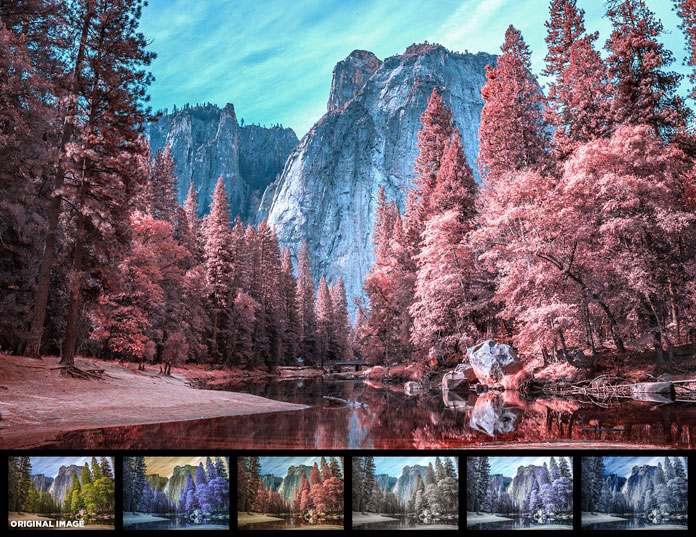 Different styles and color settings.
Different styles and color settings. 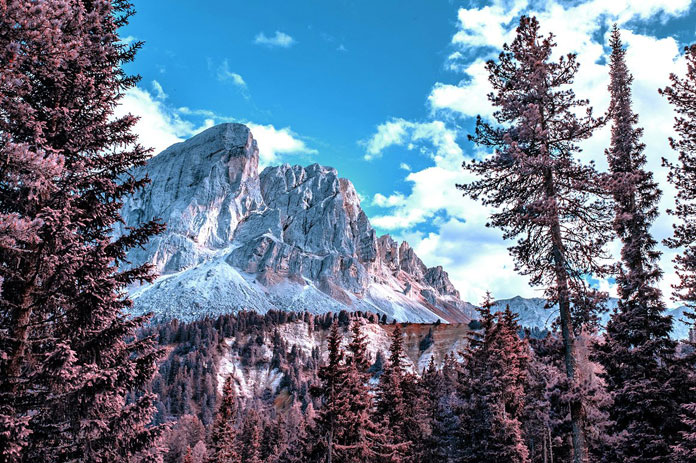 The set is well suited for landscape photography.
The set is well suited for landscape photography. 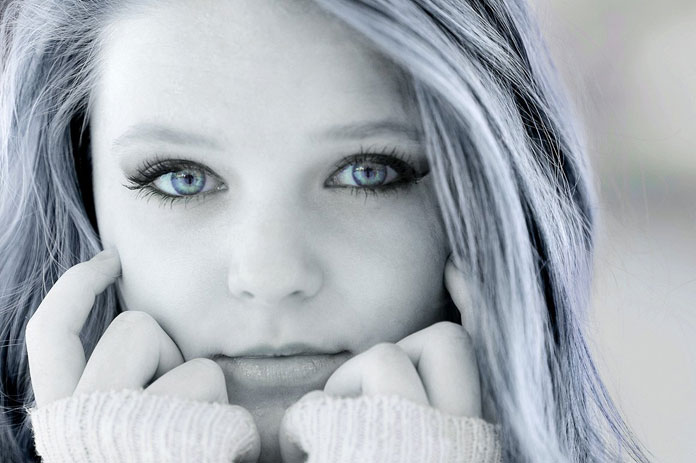 The actions are also a great choice to give your portraits an eye-catching look.
The actions are also a great choice to give your portraits an eye-catching look. 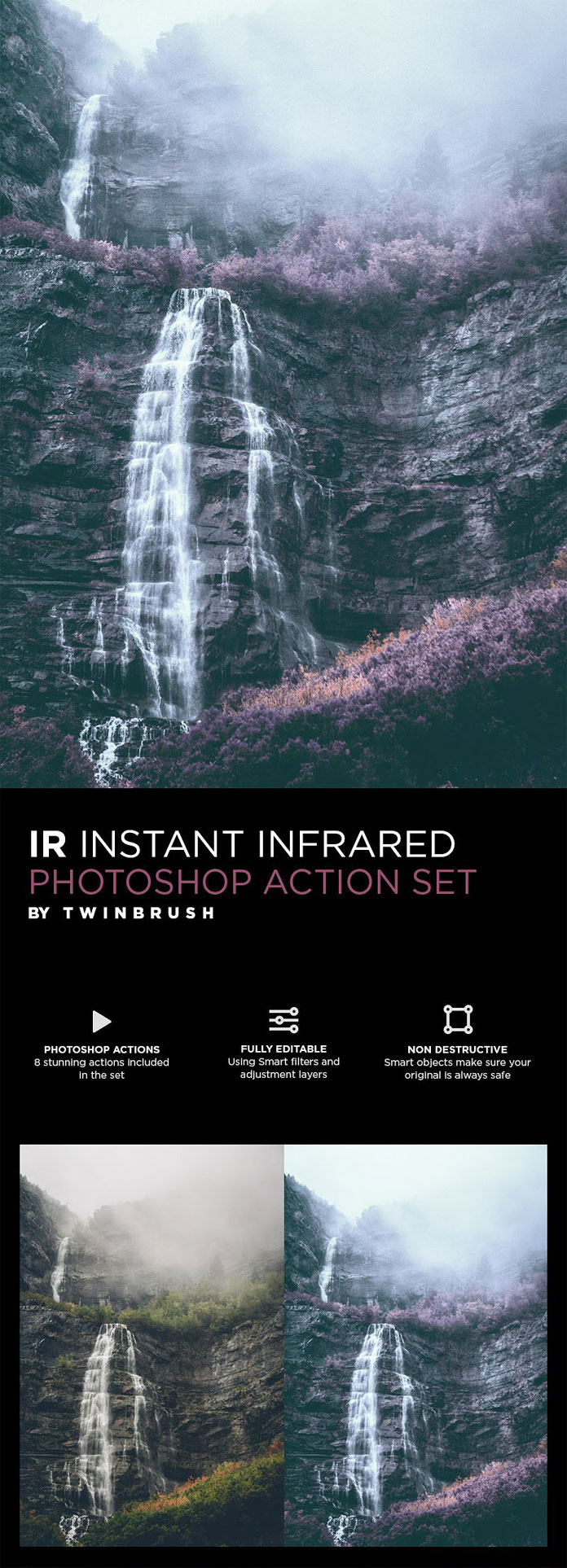 Infrared Photoshop action set.
Infrared Photoshop action set. 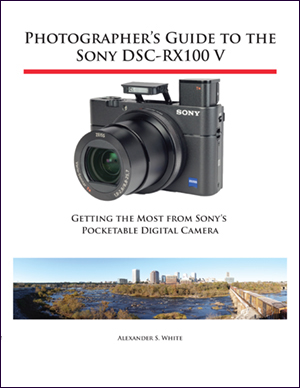
 Photo by Enzio Harpaintner
Photo by Enzio Harpaintner  Photo by ivhp0
Photo by ivhp0  By marcin nosal
By marcin nosal 

 In honor of the Feast of Our Lady of Guadalupe, [December 12th] here are ten amazing facts about the image of Our Lady as seen on Saint Juan Diego's tilma that defy scientific explanation and argue in favor of its miraculous origin and divine provenance. Mary's message of faith still speaks to us, 485 years later.
In honor of the Feast of Our Lady of Guadalupe, [December 12th] here are ten amazing facts about the image of Our Lady as seen on Saint Juan Diego's tilma that defy scientific explanation and argue in favor of its miraculous origin and divine provenance. Mary's message of faith still speaks to us, 485 years later. 4. Mary's eyes are astonishingly life like.
4. Mary's eyes are astonishingly life like. Engineer, Luis Girault, who studied the picture and confirmed the authenticity of the negative, was able to specify that it had not been modified or altered, i.e: by superimposition of another image. He determined that the image does not come from any reflection, but originates from inside Mary. The produced light is very white, pure and intense, different from habitual photographic lights produced by flashes. The light, encircled with a halo, appears to float inside Mary's abdomen. The halo has the form and measurements of an embryo. If we again examine the picture by making it turn in a sagittal plane, we perceive inside the halo some areas of shade that are characteristic of a human embryo in the maternal womb.
Engineer, Luis Girault, who studied the picture and confirmed the authenticity of the negative, was able to specify that it had not been modified or altered, i.e: by superimposition of another image. He determined that the image does not come from any reflection, but originates from inside Mary. The produced light is very white, pure and intense, different from habitual photographic lights produced by flashes. The light, encircled with a halo, appears to float inside Mary's abdomen. The halo has the form and measurements of an embryo. If we again examine the picture by making it turn in a sagittal plane, we perceive inside the halo some areas of shade that are characteristic of a human embryo in the maternal womb.